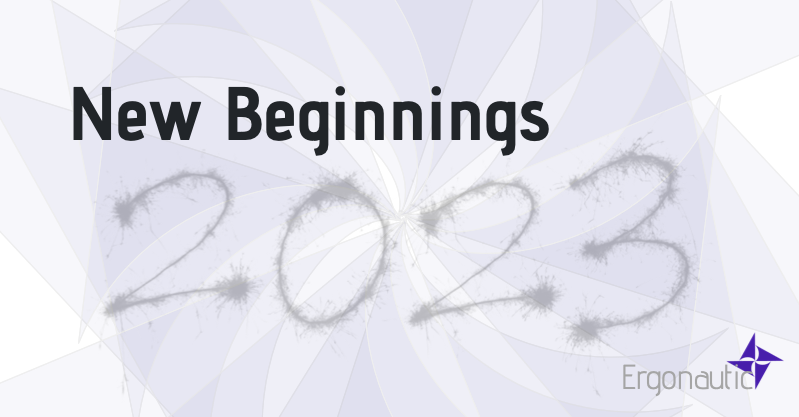
New Beginnings 2023
The world has collectively experienced exceptional stress in the past few years. We’ve faced the pandemic, drastic changes in the way we work, major geopolitical conflict, and the recurring threat of recession. As we make our way in 2023, let us reflect on how the world has changed and how we may use that to our advantage.
What’s working
Over the past few decades, the progression of the internet, cloud computing, open source, agile methods, and other factors have shifted the dynamics of developing, operating, and using software. From learning a programming language, to trying developer tools, to leveraging API-driven cloud platforms, to marketing automation - the barrier of entry to creating, operating, and selling new things has never been lower.
The pandemic accelerated digital investments, especially in the ways we collaborate. In a span of weeks, companies changed from insisting everyone works in an office to mandating and enabling working remotely. We enabled millions, maybe billions, to work remotely, including doctors and government officials. Digital meetings, digital payments, and digital signatures became not just possible but the expected standard. We trusted employees to be productive while not in the office and embraced flexibility.
The acceleration also extended digital capabilities connecting to physical realities. Faced with existential forces, organizations implemented significant improvements as many nice-to-haves became mission-critical for business continuity.
What’s not working
In the past few years, many companies I worked with have started a transformational effort or ten. Organizations play buzzword bingo, piling Agile, DevOps, Cloud, Microservices, Serverless, and SRE on top of each other without changing the fundamental dynamics created by their org charts and funding models. When progress inevitably stalls, organizations give up and shift to the next buzzword, always on the journey, yet never arriving.
Ideally, we would invest in transformation to achieve a clear advantage. However, many transformations start for the wrong reasons and head in the wrong direction. Some representative examples include:
Seeking innovation
- Pursuing novelty for the sake of being perceived as innovative without supporting or expanding value creation
Adopting new technology
- Implementing the latest and greatest tech mainly for the sake of putting it on the resume or giving a fabulous keynote
Adopting a new methodology
- Following the superficial rituals of the latest popular methodology without changing core behaviors
Seeking legitimacy
- Copying the in-vogue lingo of popular organizations in lieu of addressing unique socio-technical problems
What’s next
Many organizations have overcommitted resources to buying software and outsourcing solutions. Fit-for-purpose software can solve many problems, but it often requires a corresponding investment in engineering competency. In the same way that a subscription to a gym will not make you fit, a software subscription will only work to the extent that you put in the work.
Extending the fitness analogy, what happens if you ask an average person to perform 20 pull ups with good form? Most folks will not be able to complete the task and will even face a chance of injury. Even if we know exactly how to do a pull up we might be out of practice and unable to perform one. Much more so if we have only seen pull ups on TV or read about them in a fitness blog. The only way to the desired outcome is by learning the skill for a single strict pull up, and progressively putting in the work to get to 20.
How do you get to doing 20 secure and auditable deployments per day without introducing breaking changes? Put in the work to make one deployment effortless and uneventful. How do you get one deployment to be effortless? Start at your biggest pain point or bottleneck, and put in the work to reduce the pain.
As with most skills in life, you can DIY, and with the right level of commitment, you will succeed. But getting the right equipment and a skilled coach can increase your motivation, decrease your risk, and save you both time and money on your road to success.